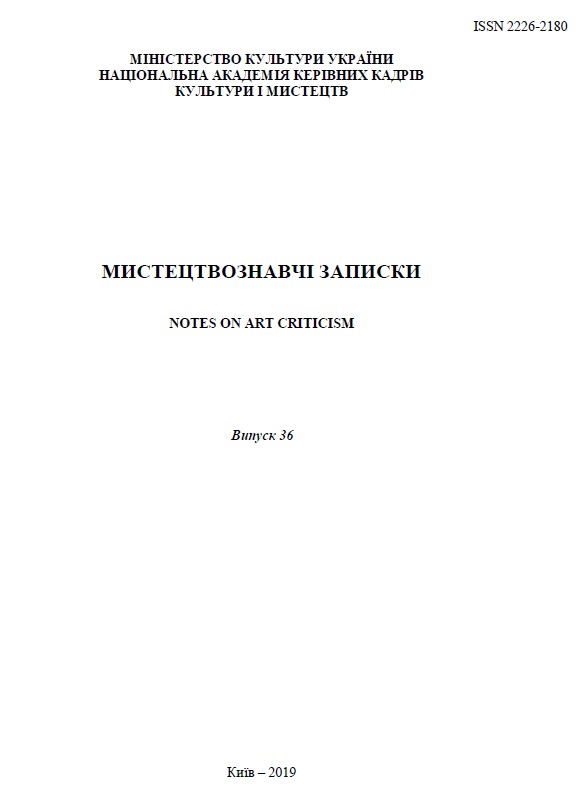ПРОДУКЦІЯ КИЇВСЬКОГО ЕКСПЕРИМЕНТАЛЬНОГО КЕРАМІКО-ХУДОЖНЬОГО ЗАВОДУ В ФОНДАХ НАЦІОНАЛЬНОГО МУЗЕЮ УКРАЇНСЬКОГО НАРОДНОГО ДЕКОРАТИВНОГО МИСТЕЦТВА
PRODUCTS OF THE KYIV EXPERIMENTAL CERAMIC-ART PLANT IN THE FUNDS OF THE NATIONAL MUSEUM OF UKRAINIAN FOLK DECORATIVE ART
Author(s): Mykola Gerontiyovych LampekaSubject(s): Cultural history, Customs / Folklore, Recent History (1900 till today), Sociology of Art, History of Art
Published by: Національна академія керівних кадрів культури і мистецтв
Keywords: Porcelain; National Museum of Ukrainian Folk Decorative Art; KECAF; Ukraine; the twentieth century;
Summary/Abstract: The purpose of the article is to investigate the influence of artworks of the Kyiv Experimental Ceramics Art Factory (KECAF) on the artistic culture of Ukraine in the twentieth century. To determine the role of the enterprise’s achievements in creating an original and original, based on national traditions, the image of Ukrainian porcelain. As the collection of the National Museum of Ukrainian Folk Decorative Art (NMUFDA) is the complete collection of works of the KECAF, we decided to explore it. The methodology of the research is based on the application of comparative and analytical methods of investigation of the phenomenon of Ukrainian porcelain and, in particular, the artistic products of the industry leader, who has attracted the best specialists of Arts and crafts to create their products. At the initial stage, the enterprise created patterns of shapes and decor for other porcelain factories in Ukraine, thus influencing the formation of typical style attributes inherent in all porcelain and faience domestic manufactures. The involvement of masters of Petrikov painting for decorating porcelain occurred precisely at the KECAF, and later, thanks to the policy of creative exchange, other ceramic enterprises also successfully began to use this method to decorate their products. The scientific novelty of the research lies in the thorough study of the collections of porcelain products of the factory in private collections and the leading domestic museums — first of all, in Kyiv. Conclusions. The article proves the necessity of creating an information space for KECAF porcelain collectors, preserving production data, introducing them to scientific circulation, and determining the impact of these works on the general culture of society. The trend towards an increase in demand for Soviet-style porcelain in the antique market obliges art experts to systematize existing products of the Kyiv porcelain factory and exclude the appearance of fakes and remodels, because this, in turn, affects not only the cultural, but also the economic policy of the state.
Journal: Мистецтвознавчі записки
- Issue Year: 2019
- Issue No: 36
- Page Range: 88-93
- Page Count: 6
- Language: Ukrainian

